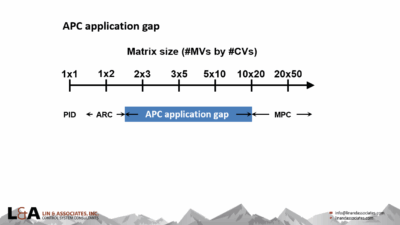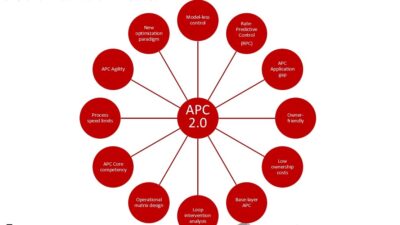The historic challenges of single-loop tuning, the limited success of autotuning, and the modern difficulties of model-based control share the same root cause.
The historic challenges of single-loop tuning, the limited success of autotuning, and the modern difficulties of model-based control, share the same root cause. Control Engineering published a two-part series on autotuning: Pros and cons of autotuning control: Part 1 in the June 2018 issue and Pros and cons of autotuning control: Part 2 in the August 2018 issue. These are excellent and informative articles, and while they make the correct conclusions, they miss one of the main implications. The story of autotuning reveals a key lesson.
As the articles rightly conclude, autotuning is “still no panacea,” and as they rightly suspect, “Perhaps the most significant challenge is an unpredictable or nonlinear process.” An unpredictable process is one where the actual process response differs from the pre-identified response upon which the tuning or model is based. This turns out to be true for most processes, which is why autotuning has achieved limited success despite a number of industry attempts. Where the actual process response varies poses a fundamental conundrum for tuning and modeling.
This explains why single-loop tuning and multivariable control modeling, which in theory should be one-time engineering tasks, are more like recurring maintenance in practice. That is the long-held reality of loop tuning, and has now emerged as the reality of model-based control, too.
Two common solutions, unfortunately, promise not to solve these problems. One is the idea of an average model or average tuning. While this is probably the best strategy, it obviously has not solved the problem beyond where we are today. The second idea is autotuning or adaptive modeling, which are potentially more problematic than averaging, because they basically tune for today, which may or may not be appropriate tomorrow.
In the vernacular, process gains change. Many, if not most, gains change frequently or even dynamically due to everyday disturbances and changes in process conditions. That retuning and remodeling remain as commonplace as they do, plus the limited success of autotuning, testify to this. It also is common sense to people who have spent years troubleshooting process control performance. Ultimately, autotuning cannot solve this problem. Users should look at the emergence of adaptive modeling, which is attempting to do the same thing on a much larger scale, with a critical eye.
Another challenge that has vexed loop tuning and model-based control is traditional error-minimization performance criteria are often inappropriate even where the related models are reliable (Figure 1). In industrial process operations, it is usually more important to observe process speed limits, carefully preserve process stability, and avoid overshoot and oscillation. Aggressive minimization of interim error is usually neither a large earner nor desirable behavior in industrial process operation.
Modern computer-based tools did not solve this dilemma, as we expected, but confirmed it, as we should have known. Going forward, tuning and modeling need to re-orient themselves to the idea that fixed models are the exception, not the rule. Model averaging remains the best practice along with reliable feedback control, conservative tuning, and very selective use of feedforward—only where necessary to avoid hard constraints, or warranted to capture large earnings—because every feedforward model comes with a reliability and maintenance cost. This is the best strategy going forward for both single-loop and multivariable control.
Allan Kern is owner and president of APC Performance LLC. Edited by Jack Smith, content manager, Control Engineering, CFE Media, [email protected].
MORE INSIGHTS
KEYWORDS: Advanced process control, autotuning
Single-loop tuning, autotuning, and model-based control share the same root cause.
Single-loop tuning and multivariable control modeling are more like recurring maintenance because there are too many unpredictable variables.
Model averaging remains the best practice along with reliable feedback control, conservative tuning, and very selective use of feedforward.
CONSIDER THIS
Are model averaging, reliable feedback control, conservative tuning, and very selective use of feedforward best practices in your plant?



